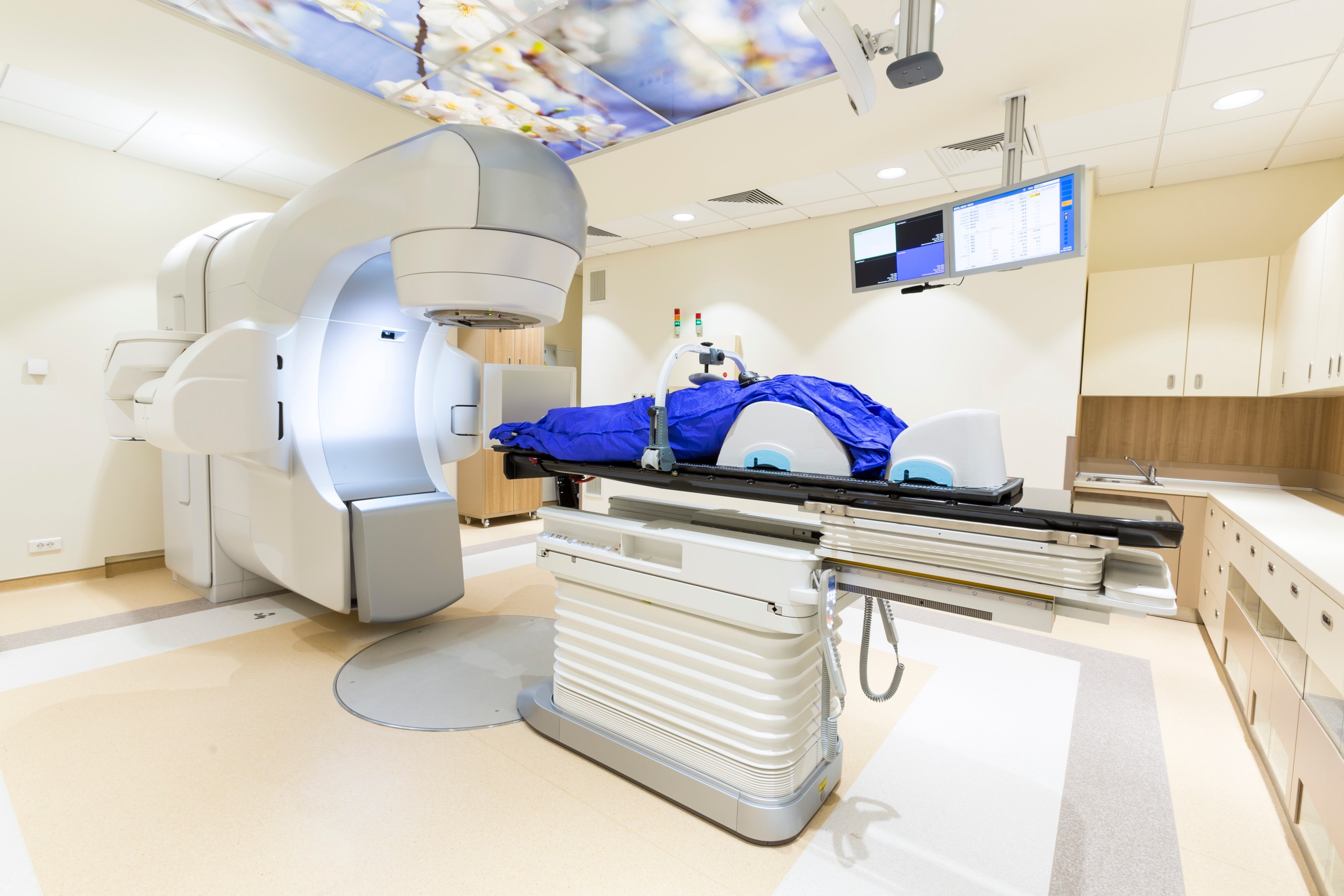There are three primary radiation therapy methods. They are:
- External radiation: Radiation beams treat cancer growth from outside the body
- Internal radiation: Radiation source is inserted into the body in solid form
- Systemic radiation: Radioactive substance is swallowed
The goal of radiation therapy is to stop the growth of early-stage cancer or shrink existing cancerous cells and tumors. It can also be used as a preventative measure to keep cancer from spreading. The type of radiation you may need will depend on the type of cancer you have and where it’s located.
What Is Radiation Therapy?
External radiation therapy, which is still the most common method, uses high-energy beams or X-rays to shrink and destroy cancer cells. It is typically a localized, targeted treatment, which is different from other cancer treatments like chemotherapy that may affect the entire body. Radiation therapy aims to damage cancer cells to inhibit the out-of-control growth.
Radiation therapy is one of the most common cancer treatments, but it does come with risks and potential side effects. These may include:
- Nausea
- Vomiting
- Hair loss
- Reduced appetite
- Fatigue
- Headaches
- Mouth sores
Specialists have safely used radiation therapy techniques to treat cancer for over a century. If you’re worried about side effects, speak with a healthcare professional. Our radiation oncologists at Community Cancer Center in Roseburg would be happy to discuss the benefits and risks of this therapy.
A radiation oncologist will be able to determine if radiation therapy is right for you. Your oncology team should provide detailed information on the side effects you may experience, which may vary based on the intensity and location of your radiation therapy. It’s important to follow post-treatment instructions to better cope with the side effects of the treatment.
Types of Radiation Therapy Explained
The main types of radiation therapy are external and internal beam therapy, with systemic radiation therapy being a common subset of internal beam therapy.
External Beam Radiation
External beam radiation therapy, also called teletherapy, comes in many different varieties. Its goal is to deliver a localized treatment to cancer cells or tumors while minimizing damage to the surrounding tissue. Scans such as MRI, CT and PET scans are processed via computer to identify the exact location of tumors within the body and the best path for treatment.
Examples of external beam radiation therapy include:
- Three-dimensional conformal radiation therapy: Also known as 3D CRT, this therapy uses a CT, MRI or PET scan to simulate the treatment area. Scans are then uploaded into a computer program that designs radiation beams that conform to the exact shape of the tumor.
- Intensity modulated radiation therapy: Similar to 3D CRT but the beams are much smaller, and more of them are used so that higher doses of radiation can target certain parts of the tumor.
- Tomotherapy: Tomotherapy uses a CT scanner and an external beam radiation machine to rotate around the patient during treatment. Beams are administered in a spiral pattern with each rotation.
- Image-guided radiation therapy: Repeated image scanning is used to identify any changes in the tumor size or location. This allows adjustments to be made to the radiation plan to improve accuracy.
- Stereotactic radiosurgery: This is typically used for smaller tumors. Multiple beams are aimed at the tumor from varying directions. The beams have little strength individually, but a concentrated dose of radiation is delivered at the point where all the beams intersect.
Internal Radiation Therapy
Internal radiation therapy, also known as brachytherapy, uses an implant to deliver a higher dose of radiation to a smaller area. Implants may take the form of tubes, ribbons, wires, needles, capsules, balloons, pellets or seeds. They are inserted as close to the tumor as possible to minimize harm to healthy cells.
Internal radiation therapy implants may also be administered via a drink that travels through the body when swallowed. The liquid is generally harmless to other healthy cells and will gather near the cancerous cells. When the radioactive substance is swallowed or injected in its liquid form, it is known as systemic radiation, a subset of internal radiation therapy.
Learn More About Radiation Therapy and Other Cancer Treatments Available in Rosenberg, OR
At Community Cancer Center, we offer state-of-the-art oncology care with readily available radiation therapy treatments for Oregon residents. We’ll personalize your cancer treatment plan and ensure you are informed of all potential risks.
We’re able to deliver extremely precise treatments with our radiotherapy system, and our team of experienced professionals will be right there with you to answer any questions you may have. To learn more, call us at 541-673-2267 or contact us online.
